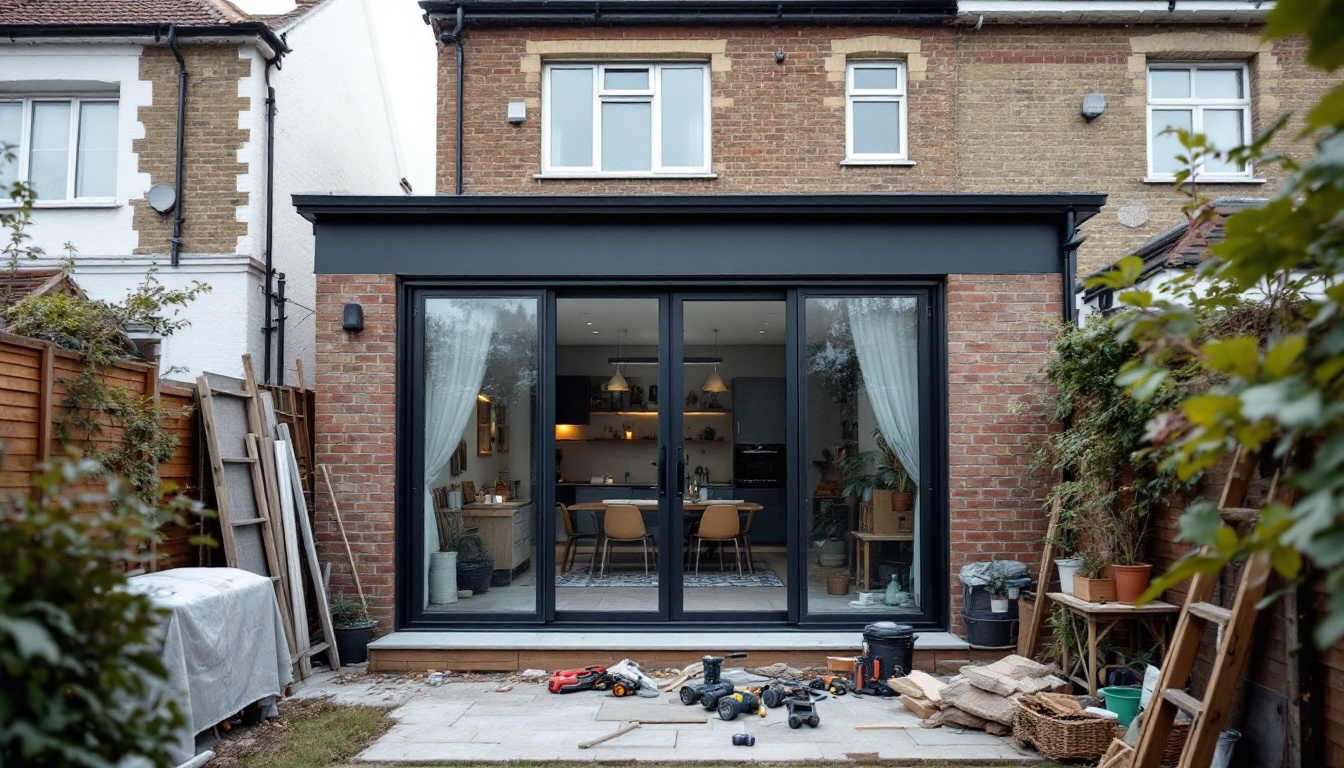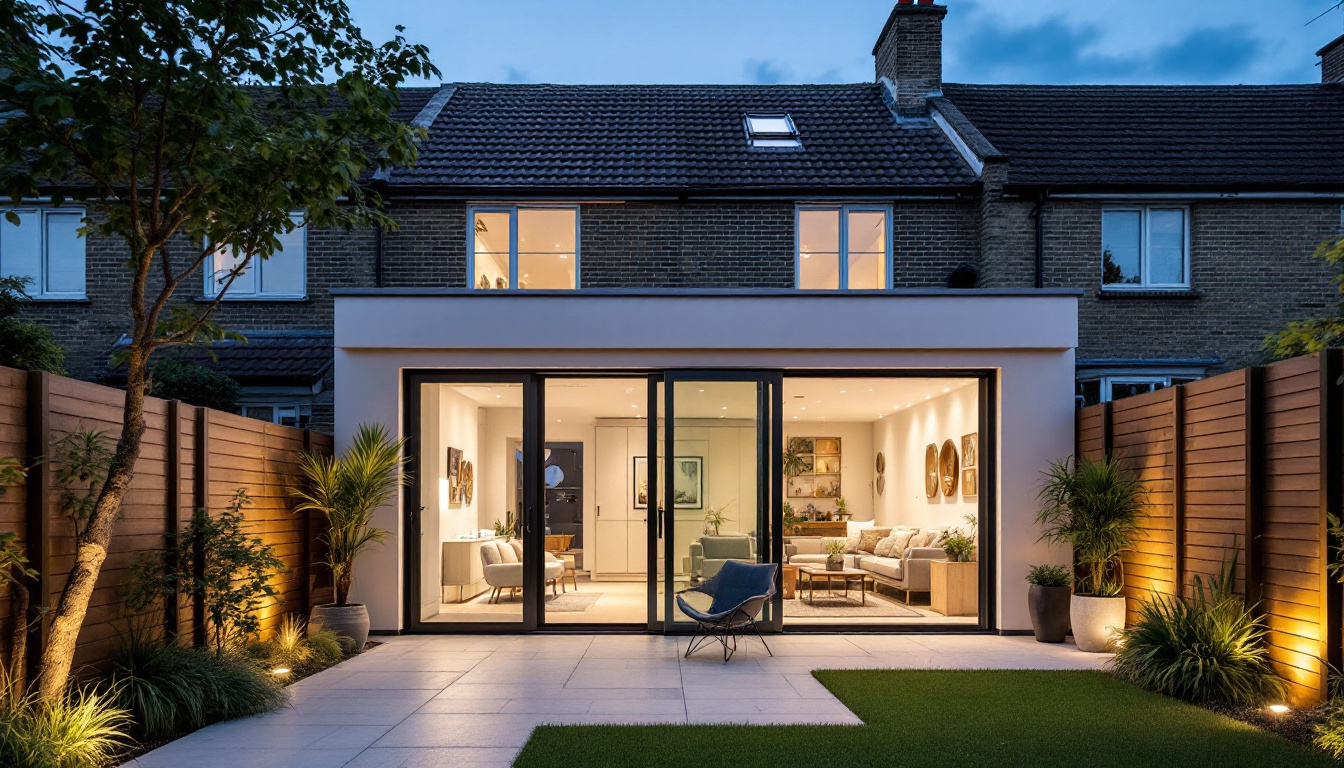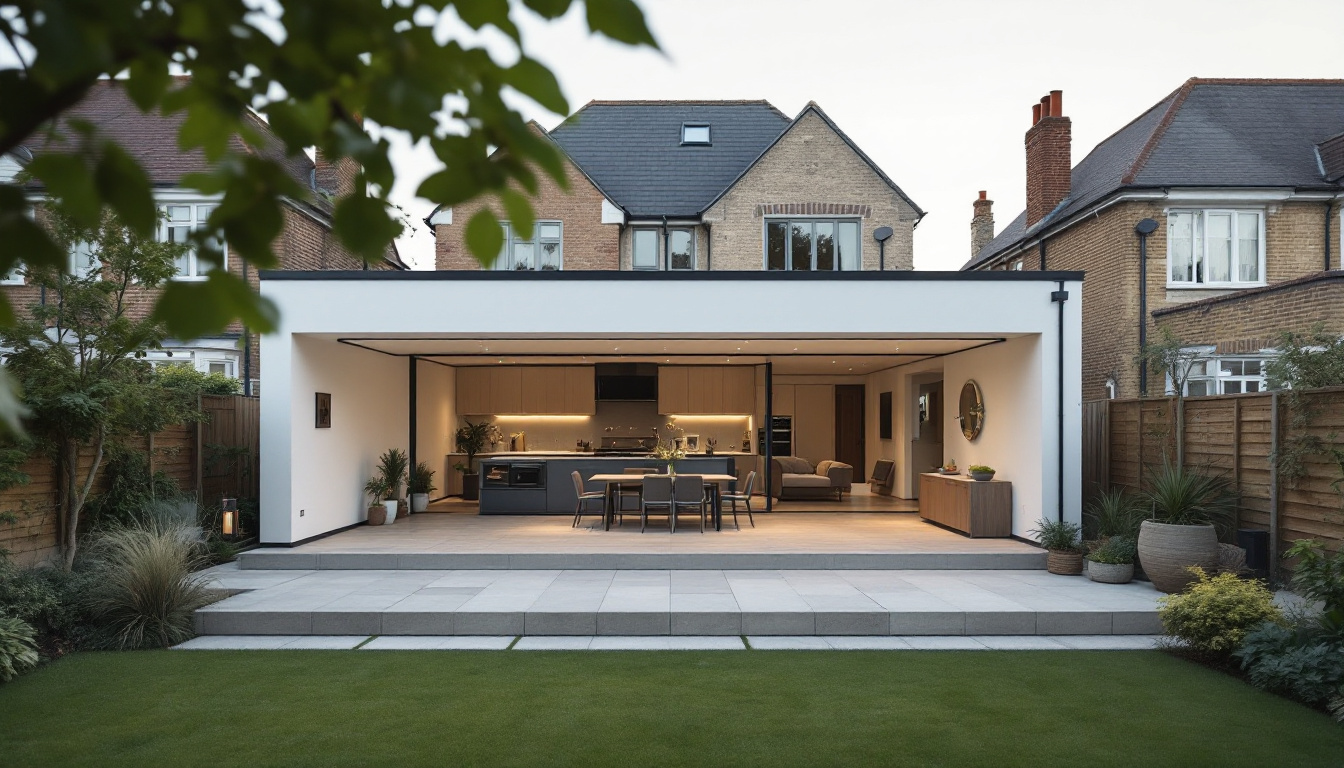How Much Does a Rear Extension Cost for a Terraced House?
Adding a rear extension to a terraced house is a popular way to create more living space, improve functionality, and increase property value. However, understanding the costs involved can be tricky, as prices vary depending on several factors such as size, design, materials, and location. This guide breaks down what you can expect to pay for a rear extension on a terraced house in the UK, helping you plan your project with confidence.
Typical Costs for Rear Extensions on Terraced Houses
When considering a rear extension, one of the first questions homeowners ask is, “How much will it cost per square metre?” According to HomeHow, the typical cost for rear extensions on terraced houses ranges between £1,500 and £2,500 per square metre. This range reflects variations in the quality of materials, design complexity, and local labour rates.

For example, a simple single-storey rear extension with basic finishes will be at the lower end of this spectrum, while more elaborate designs with high-end materials and fixtures push costs toward the higher end. Additionally, factors such as the existing structure's condition, the need for planning permission, and any required structural alterations can further influence the final cost. Homeowners should also consider the potential for hidden costs, such as site preparation, landscaping, and utility connections, which can add to the overall budget.
Single-Storey vs Double-Storey Extensions
Many homeowners also consider whether to build a single-storey or double-storey rear extension. Single-storey extensions tend to be more straightforward and less expensive, but double-storey extensions offer more space and flexibility. The choice between the two often hinges on the homeowner's specific needs and the existing layout of their property.
Livingetc reports that single-storey extensions generally cost between £1,800 and £3,500 per square metre, while double-storey projects range from £1,650 to £3,250 per square metre. AR Design Build adds that a double-storey extension usually falls between £1,200 and £2,200 per square metre, depending on location, materials, and design complexity. It's important to note that while double-storey extensions may have a higher upfront cost, the price per square metre can sometimes be more competitive, especially if you need substantial additional space. Furthermore, a double-storey extension can significantly enhance the value of your property, providing more living space and potentially attracting higher offers if you decide to sell in the future.
Moreover, the design possibilities for double-storey extensions can be quite exciting, allowing for the creation of unique architectural features such as balconies or large windows that enhance natural light. Homeowners should also consider how the extension will integrate with the existing home and garden, as well as any potential impact on neighbours, which may require thoughtful planning and consultation with design professionals. This holistic approach not only helps in managing costs but also ensures that the extension complements the overall aesthetic and functionality of the home.
Additional Costs to Consider Beyond Construction
When budgeting for a rear extension, it’s important to remember that construction costs are only part of the total expenditure. Planning permission and professional fees can add significantly to your budget.
In England, planning permission typically costs around £206. However, you may also need architectural drawings and structural engineer reports, which can add between £1,000 and £3,000 depending on the complexity of the project. These costs are essential to ensure your extension is safe, compliant with building regulations, and well-designed.
Ignoring these additional fees can lead to unpleasant surprises down the line, so it’s wise to factor them into your initial budget.
Comparing Rear Extensions to Other Home Improvement Options
Some homeowners wonder if a conservatory might be a cheaper alternative to a rear extension. According to Ideal Home, conservatories generally cost between £1,300 and £1,500 per square metre, which is usually less expensive than single-storey extensions that range from £1,800 to £3,000 per square metre.
However, while conservatories can be a cost-effective way to add space, they often lack the insulation, durability, and year-round usability of a well-built rear extension. Extensions also tend to add more value to your property and offer greater design flexibility.
Why Invest in a Rear Extension?
Beyond the immediate benefit of extra space, a well-executed rear extension can significantly enhance your home’s functionality and market appeal. Ideal Home notes that kitchen extensions, in particular, can boost property value by up to 15%. This makes rear extensions not just a lifestyle upgrade but also a smart financial investment.

Whether you’re expanding your kitchen, creating a family room, or adding a home office, a rear extension tailored to your needs can transform how you live in your home.
Wrap-Around Extensions: More Space, More Complexity
For those seeking even more space, wrap-around extensions—which combine rear and side additions—are an option. Homebuilding highlights that these extensions offer substantial extra room but come with increased costs due to their complexity. If your terraced house layout allows for this type of extension, it’s worth considering the benefits against the higher budget required.
Factors Influencing the Cost of Rear Extensions
Several key factors impact the final cost of a rear extension on a terraced house:
- Size: Larger extensions naturally cost more, but the price per square metre can sometimes decrease with scale.
- Design Complexity: Intricate designs, unusual shapes, or high-end finishes increase costs.
- Materials: The choice of bricks, windows, roofing, and interior finishes all affect the budget.
- Location: Labour and material costs vary across the UK, with London and the South East typically more expensive.
- Planning and Regulations: Obtaining necessary permissions and adhering to building codes add to the timeline and cost.
Understanding these factors helps homeowners make informed decisions and avoid unexpected expenses.
Final Thoughts: Planning Your Rear Extension Budget
Planning a rear extension for a terraced house is an exciting project that can greatly improve your living space and property value. While costs vary, a realistic budget should start with the typical range of £1,500 to £2,500 per square metre for a rear extension, plus additional fees for planning and professional services.
It’s advisable to get multiple quotes from reputable builders and consult with architects or designers early on to tailor your project to your needs and budget. Remember that investing in quality materials and professional expertise often pays off in the long run through durability, aesthetics, and increased home value.
By understanding the costs and factors involved, you can confidently embark on your rear extension project and create a home that truly fits your lifestyle.


